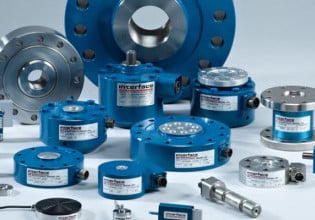Gas, Smoke, and Fire Sensors for Industrial and Commercial Applications
We see smoke detectors on a daily basis in every house and building we visit, but the same sensor elements, and others, can be used to detect the presence of harmful gasses and heat in all industries.
See Our Previous Articles on Industrial Sensors:
- Microelectromechanical System (MEMS) Sensors
- Position and Distance Sensors for Accurate Tracking
- Torque Sensors for Measuring the Force of Rotation
- Vibration Sensors for Condition Monitoring
- Radiation Sensors: Detecting Particle and Wave Emissions
Gas, smoke, and fire sensors are essential components that detect hazardous situations, such as gas leaks, smoke, and fire outbreaks, and provide early warning. These sensors help prevent injuries, property damage, and, more importantly, loss of life. This article explores the working principles and applications of gas, smoke, and fire sensors.

Figure 1. A residential use carbon monoxide alarm. Image used courtesy of First Alert
Gas Detectors
Gas detectors are sensors that detect the presence of gases in the air, including toxic, combustible, and hazardous gases. Gas detection is based on the ability of gases to interact with certain materials, producing a measurable change in the electrical or optical properties of the material. There are various types of gas detectors, including electrochemical sensors, catalytic sensors, infrared sensors, and photoionization detectors, among others.
Electrochemical Sensor
Electrochemical gas sensors measure the concentration of a specific gas in the air through a chemical reaction that occurs at an electrode. The basic structure of these sensors consists of two electrodes submerged in an electrolyte solution. One electrode is coated with a catalyst to facilitate a chemical reaction between the gas to be detected and the electrolyte. When the electrochemical reaction occurs, an electrical current is produced proportional to the gas concentration in the environment.
Electrochemical gas sensors are the most common type of gas detector, and they can be found in industries such as mining and oil and gas, as well as in residential and commercial buildings. Some hazardous gases normally detected are carbon monoxide, hydrogen sulfide, and methane.

Figure 2. A catalytic gas leak detector. Image used courtesy of Ambetronics
Catalytic Sensor
Catalytic sensors detect the heat generated by the combustion of gas on a heated element. These sensors typically use platinum or palladium catalysts to promote the reaction. The heat produced changes the resistance of the material, which is then measured by electrodes and converted into a gas concentration reading. These sensors are used in industrial settings to detect the presence of combustible gases such as propane and methane. They are also used in residential and commercial buildings to detect natural gas leaks from appliances like stoves and furnaces.
Photoionization Detector
Photoionization gas detectors use ultraviolet light to ionize gas molecules, creating a measurable electrical current. These sensors are highly sensitive and can detect gases at very low concentrations. They are commonly used in applications such as workplace monitoring and leak detection. They are also used in the petrochemical industry to detect the presence of volatile organic compounds in refineries and chemical plants.
Smoke Sensors
Smoke is made up of gases and solid particles suspended in the air. It contains carbon monoxide, or carbon dioxide, along with many other chemicals. Smoke sensors detect the presence of smoke in the air to provide an early warning of potential fires nearby. The two most common types of smoke sensors are ionization and photoelectric sensors.

Figure 3. An ionization smoke detector used in residential buildings. Image used courtesy of Adobe Stock
Ionization Smoke Detector
Ionization smoke detectors use the radioactive material Americium-241 to ionize the air inside a sensor chamber. Once smoke enters the chamber, it interferes with the ionization process, altering the flowing electrical current. These sensors are the most common smoke detectors found in residential buildings. They are relatively inexpensive to build and are sensitive to the particles produced in fast-burning fires. On the other hand, they can be prone to false alarms triggered by cooking smoke or steam from a shower.
Photoelectric Smoke Detector
Photoelectric smoke detectors work by using a small light source and a sensor within an empty chamber. Smoke that penetrates the chamber scatters the light from the emitter source, triggering an alarm. These sensors are also very common in residential and commercial buildings. They can also be found in aircraft, boats, and other vehicles.
Fire Sensors
Fire sensors detect the heat produced by a nearby fire. In theory, smoke detectors can also be considered a type of fire sensor. However, there are more sensors that detect fire, such as flame detectors, heat detectors, and multi-sensor detectors.
Flame Detector
Flame detectors can detect the presence of a flame by sensing the ultraviolet or infrared radiation emitted.

Figure 4. A multispectrum flame detector. Image used courtesy of Det-Tronics
Heat Detector
Heat detectors can sense a rise in temperature caused by a fire. Some heat detectors trigger an alarm when the temperature in the surrounding area reaches a predetermined level. Other heat detectors work by measuring the rate of temperature change. They trigger an alarm upon sudden temperature increases before reaching a set temperature quantity.
Heat detectors are useful in places where smoke detectors are not suitable due to the risk of false alarms. They can also measure heat in areas with high dust, dirt, and other factors that could cause false alarms.






